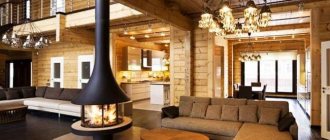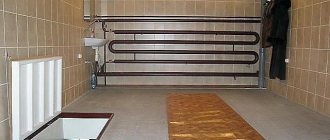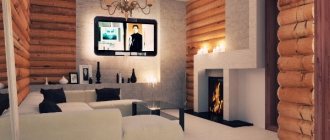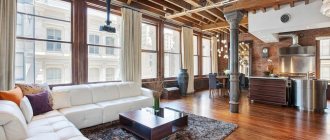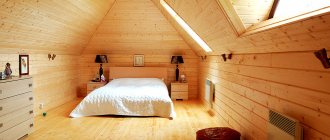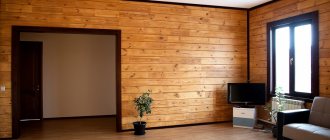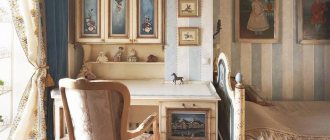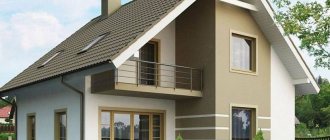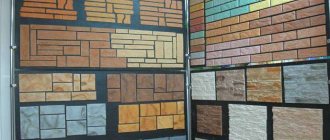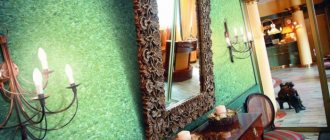If you have built a brick house from ordinary brick, which does not have a very presentable appearance, then in order to improve the aesthetic qualities of the building, the walls of the house will have to be covered with one of the modern facing materials. There is a fairly large assortment of products for exterior wall decoration of a house. When choosing them, it is worth considering not only the attractiveness of the material, but also its technical characteristics: durability, strength, ease of installation, practicality, thermal conductivity, resistance to moisture, solar radiation and wind influences.
Finishing requirements
A good finishing material should reliably protect walls from atmospheric moisture and condensation
A good finishing material should reliably protect walls from atmospheric moisture and condensation, and help improve the sound and heat insulation qualities of the house. That is why when choosing external cladding you must be guided by the following requirements:
- The sheathing material must have low thermal conductivity so that the house retains heat well.
- Condensation should not form on the surface of the walls and inside the layer of heat-insulating material, so either the material must have good vapor permeability, or the house should be sheathed with a ventilation gap between the finish and the wall.
- The finishing layer should not fade or deform under the influence of sunlight, have high frost resistance and low water absorption.
- Equally important is the fire safety of the finish used.
- It is good if the outer finishing layer is resistant to chemical influences, damage by microorganisms, insects and rodents.
- It is also important to consider the durability of the material and ease of installation.
Application technology
Applying a protective mixture is not much different from applying paint. Practical skills are welcome, but without them there should not be any difficulties. Proper application of the solution does not require labor or expense. You just need to follow a few simple steps. The use of the developed technology will protect you from mistakes and introduce you to the features of using paints and varnishes.
Pay attention to: Concrete varnish: types and advantages of compositions
Necessary tool
Studying the condition of the material is necessary when choosing tools. Inventory varies depending on the degree of contamination of the object, its texture, and strength. The standard set includes two types of tools - for cleaning the surface and for applying the paint and varnish mixture.
Surface Cleaning Tools
The inventory is compiled based on the degree of contamination of the object. In some cases, putty, grout, cement and primer will be useful. They are used on uneven surfaces of walls and in gaps between bricks, correcting the relief of the object. Basic tools:
- wire brush or sponge;
- soap;
- hard sponge;
- scraper knife or spatula;
- sandpaper.
Iron brush
Putty knife
Sandpaper
Tools for applying the product
The use of the solution must be approached with extreme caution. It is recommended to protect your skin from it. You can apply varnish to brick using three basic tools. These include:
- roller;
- spray;
- synthetic brushes with flat bristles.
Spray
Roller
Surface preparation
Before applying the solution, the surface must be cleaned. Otherwise, adhering dirt will remain under the film. To remove it, you will have to completely remove the protective layer. Algorithm of actions:
- Remove dirt. Brick covered with old paint is processed, removing traces of early finishing. This can be done with a hair dryer or solvent. Then you should rub the material with sandpaper, removing stubborn stains. If there is excess cement between the bricks, you need to use a cutting tool and a hammer.
- Dry the material.
- If necessary, get rid of salt formations at the site.
- After the secondary rinsing, wait until the brick is completely dry.
- Treat the surface with a primer.
We clean the brick from dirt and efflorescence
Cover the brick with primer
Features of working with varnish
It is recommended to varnish an object at a warm temperature. It is advisable that the weather be dry. The temperature should not exceed +30 degrees. It is possible to apply the composition at low temperatures down to -10 degrees. Deviation from the range will cause the mixture to streak or lie unevenly on the material. The product is applied overlapping with a roller (pile length - 2 cm), brush or spray. You should start from the upper corners of the surface. When using a spray bottle, the composition must be mixed with a solvent: the density of the product will decrease and it will become easier to spray. The varnish is applied in two layers or more. You must wait for the layer to dry before applying another layer. Absorption usually takes from 30 minutes to 2 hours. It is recommended to leave the last layer to dry for a couple of days. The painted surface should be treated with a mild detergent every six months.
Apply varnish to the surface
General rules and recommendations
When choosing how to sheathe the outside of a brick house, it is worth remembering that the vapor permeability of materials in enclosing structures should decrease towards the outer surface of the walls
When choosing how to cover the outside of a brick house, it is worth remembering that in order to maintain optimal humidity inside the house, the vapor permeability of materials in enclosing structures should decrease towards the outer surface of the walls. Thus, the exterior finish should allow steam to pass through better than the wall structure itself.
If this rule is not observed, then moisture will begin to accumulate at the interface between materials with different degrees of vapor permeability. Even open windows won't help. As a result, moisture will condense and create favorable conditions for the development of mold, mildew and rot. In winter, it will freeze and cause gradual destruction of the walls of the house. As a result, after some time the finished façade will have to be dismantled and redone.
However, only wood has the required degree of vapor permeability. Most modern materials for exterior finishing have low vapor permeability, so the facade has to be finished in one of two ways:
- You can install a ventilated facade system. To do this, a ventilation gap 4-6 cm wide is left between the insulation with a high degree of vapor permeability or the wall. For free air circulation in this space, ventilation holes are left in the lower part of the finishing layer. Their total area is calculated at the rate of 3.75 cm² for each square meter of wall (windows and doors are taken into account). Through these holes, air will be drawn into the ventilation gap, and it will exit through the holes in the upper part of the facade.
- It is possible to cladding the façade without a gap. In this case, the finishing material is fixed directly on the house. But before that, a vapor barrier membrane is attached to its walls. In this case, moisture cannot penetrate into the wall structure and condense there, and excess moisture is removed from the room by the ventilation system.
Important: since recently more effective insulation materials (regular and extruded polystyrene foam), which have low vapor permeability, have been used to insulate the walls of a house, the second finishing option using a vapor barrier membrane is more often used.
Brick varnish
I put brick varnish at the end of my processing list, since any varnish clogs the surface of the clay brick and the wall stops “breathing.” However, varnish is much cheaper than water repellents.
Varnish for stone and brick provides:
- heat resistance
- water repellency
- protection against mold and mildew.
There are three main compositions of varnish for stone (brick):
- Sealing impregnation based on silicone and acrylic resins . Mixture for natural and artificial stone, paving slabs, concrete.
- Solvent-based impregnations with silicone resins . Creates a crystal lattice, penetrating deeply into the surface of the stone. Does not peel off, does not fade.
- Acrylic protective and decorative impregnation based on latex with the addition of silicone . Provides stone, brick and concrete protection from destruction and leaching, from salt and acids. Does not change the natural color of the stone and texture, easy to clean. Has a hydrophobic effect.
Wood paneling
If you want to sheathe the outside of your house cheaply, then the option using planed boards is the most budget-friendly
Wood has been used in construction and decoration for centuries. This material has a beautiful appearance and is able to regulate humidity. In the photo you can find many options for wooden cladding of the house. Most often, a house block, lining for exterior finishing, or a board with imitation timber is used for this.
How to decorate the outside of a house made of foam blocks?
Externally, the block house very accurately imitates the surface of a rounded log. Any wooden finish is attached to the sheathing, then sanded and coated with protective impregnations. If desired, the finish can be varnished or painted.
If you want to sheathe the outside of your house cheaply, then the option using planed boards is the most budget-friendly. It is attached to the sheathing so that the bottom edge of the board overlaps the previous element by 1-2 cm. This herringbone finish looks impressive and is inexpensive.
However, wooden house decoration has several disadvantages:
- It is susceptible to rot, damage by insects and microorganisms.
- Without proper care, wooden cladding quickly darkens and loses its decorative qualities.
- This type of finish requires regular annual maintenance. If you want to clad your house and not have problems with maintenance, then this option is not suitable for you.
Cladding under plaster
If you plan to insulate your house with thermal insulation materials, then when deciding how to decorate the facade, you should consider the option of using plaster
If you plan to insulate your house with high-density thermal insulation materials, for example, polystyrene foam, extruded polystyrene foam, pressed glass wool or fiber cement, then when deciding how to finish the facade, you should consider the option of using plaster. With this finishing option, there is no need to equip the sheathing. This finish is ideal for brick houses.
Installation of such cladding is carried out as follows:
- The walls of the house are cleaned of dirt and dust. For better adhesion, the surface of the walls is wetted with water before applying the adhesive.
- Then a special diluted adhesive is applied to the slabs of thermal insulation material. The plates are applied to the wall and pressed tightly.
- Then the element is additionally attached to the wall using dowels with caps.
- After completing the first row, the insulation slabs in the second row are fastened with a shift in the vertical seam, as in brickwork.
- This way all the walls of the house are covered.
- After the glue has dried, using a reinforcing mesh and a special corner, the corners of the house, edges around windows and doors are strengthened. The reinforcing mesh is glued with the same glue.
- Then the serpyanka mesh is glued over the entire plane of the insulated facade.
- When the surfaces have dried well, you can begin applying polymer plaster. A layer 2-3 mm thick is enough.
- After this, decorative plaster is applied.
Siding
When deciding what is best to cover a brick house, many owners choose siding
When deciding what is best to cover a brick house, many owners choose siding. There are many varieties of this material that accurately imitate stone or wooden wall coverings. Siding made from metal, vinyl and asbestos cement is available. Vinyl siding is the most popular. Its price is the most reasonable, and installation and processing are the simplest.
What is the cheapest way to cover the outside of a house?
Among the advantages of this material it is worth mentioning the following:
- The product is quite elastic and resistant to mechanical stress, namely scratches and impacts.
- The panels are not susceptible to damage by microorganisms and insects, do not fade in the sun, and do not rot.
- Siding reliably protects the walls of the house from wind and atmospheric moisture.
- The material is very easy to care for. To refresh the façade, simply wash it under running water.
- A large selection of colors and textures allows you to create beautiful and original facades.
- The product is not subject to combustion.
- The material is non-toxic.
- Affordability and ease of installation are additional advantages.
As a rule, siding is mounted on sheathing. When installing vinyl siding, it is worth considering that the material reacts by changing its linear dimensions to temperature changes, so when installing it you should adhere to the following rules:
- The siding is mounted using corner, profile and connecting elements, that is, all the ends of the panel are hidden inside the additional elements. To compensate for temperature deformations, there must be a gap of 10 mm from the end of the panel to the additional element.
Attention: if installation is carried out in the summer, the gap size can be slightly reduced.
- Installation of fasteners is allowed only in special oblong holes on the panel. In this case, the fastener must be screwed into the central part of the hole.
- It is forbidden to tighten the fasteners tightly, since in this case the panel will be deformed and may crack due to temperature changes.
Clinker thermal panels
The main advantage is that clinker thermal panels simultaneously serve as insulation and decorative finishing
This is a modern finishing and thermal insulation material that has appeared on the construction market relatively recently, but has already gained popularity. Among the advantages of this product it is worth listing the following:
- The main advantage is that clinker thermal panels simultaneously serve as insulation and decorative finishing.
- The product accurately imitates the surface of masonry and is available in a wide range of colors and textures, from which it is easy to choose a finish that suits the style of your home.
- By finishing the building with such panels, you will get stylish and respectable housing.
- The panels are easy and quick to install.
- Clinker products are suitable for cladding a brick or wooden house, as well as buildings made of cellular concrete.
- Since the panels are light in weight, there is no need to further strengthen the foundation of the house.
- The low water absorption of the product allows you to wash the facade of the house with a stream of water from a hose.
- High tightness of the cladding is achieved by tightly joining the panels.
- Such cladding can last up to 60 years while maintaining its original appearance and without repair.
Panels can be produced on polystyrene foam or polyurethane foam. Clinker tiles are pressed into them. The product is produced in the form of elements with a locking connection (groove-ridge) in the end part. On sale there are straight wall thermal panels and corner elements for decorating corners, windows and doors. The products are reinforced with plastic guides, which reliably protect the facing layer from mechanical damage and deformation. To install the panels on the surface of the walls of the house, lathing is made. After fastening the products, the seams are filled with a special grout.
Foreign or Russian
The buyer of brick varnish for interior work always faces a choice of which manufacturer to choose. Some purchase exclusively imported varnishes. There are advantages here: they do not have a strong odor and dry quickly. Also, imported materials are better in operation.
The most popular coatings and varnishes among the population are those produced in the USA. They are produced by Pufas and Petri. These manufacturers have established themselves as successful and reliable suppliers. They have a wide range of products, which are regularly supplied to Russia.
The domestic production of varnishes is also not standing still. Usually universal formulations are created. They are suitable for brick, stone, and are also good at working with concrete. The price of locally produced products also pleasantly pleases the potential buyer, especially when large quantities are purchased. The disadvantage of Russian varnishes is a strong, unpleasant odor that does not dissipate for a long time from the room where the work was carried out. They are not recommended to be used or stored near children. Over time, they began to produce good quality varnishes that perfectly protect brickwork from external damage.
One of the best products is Neomid. It creates a high-quality protective film that even fights the appearance of fungus. Unlike most coatings produced in our country, Neomid does not have a sharp or unpleasant odor. They can easily handle elements located in a small room.
